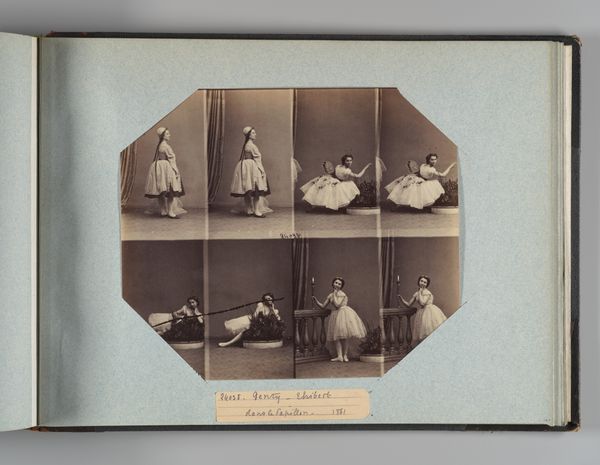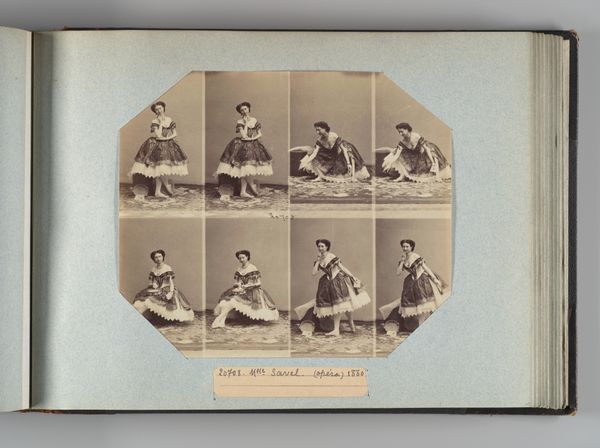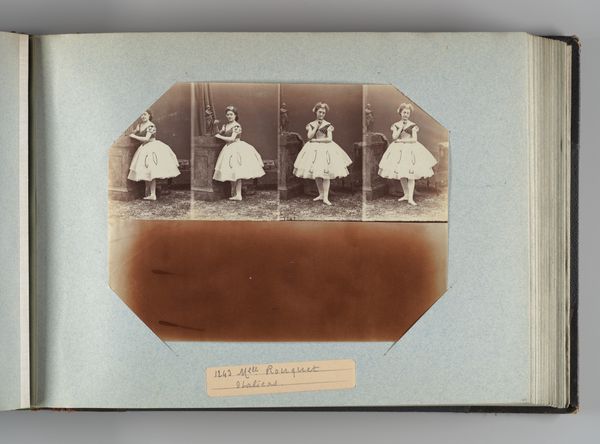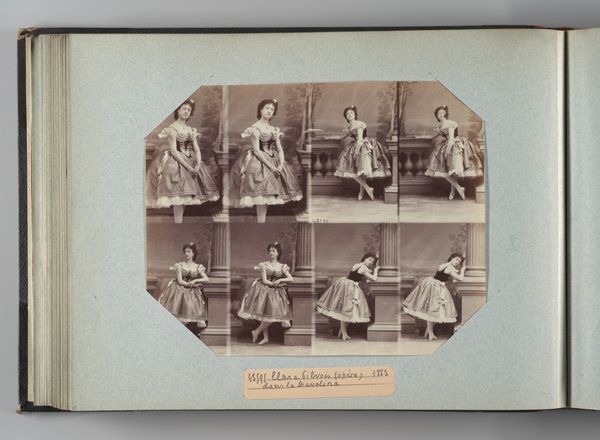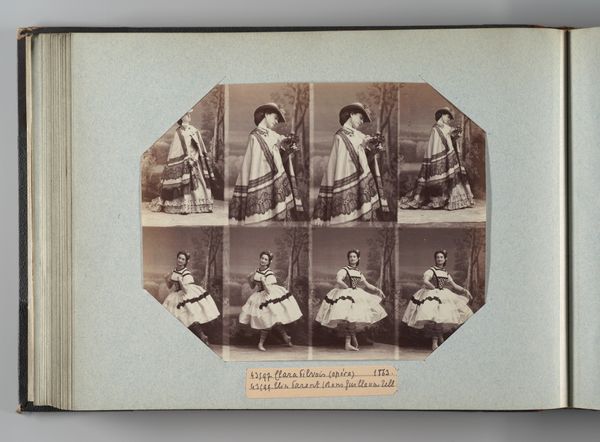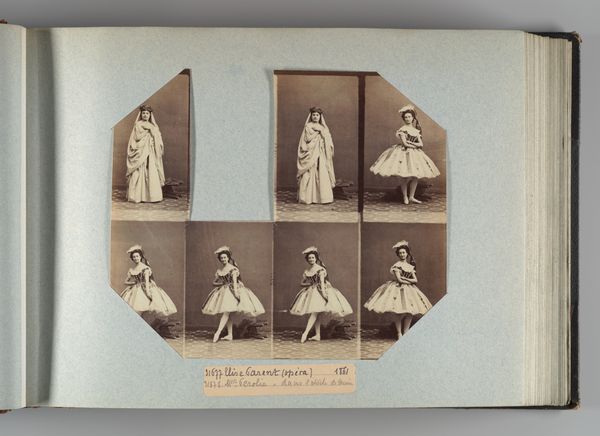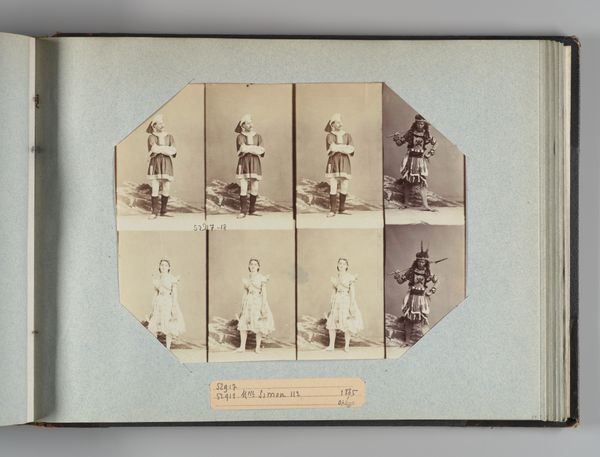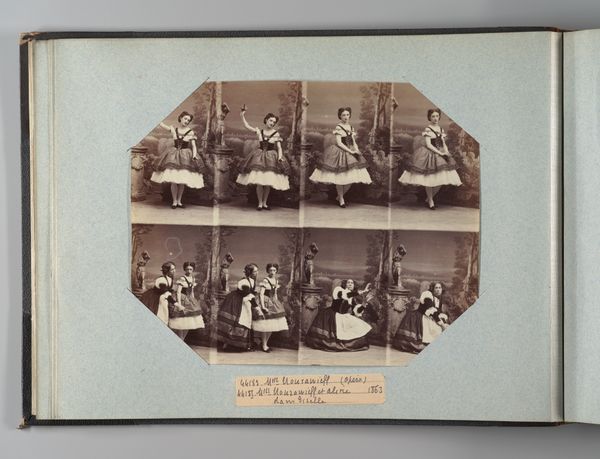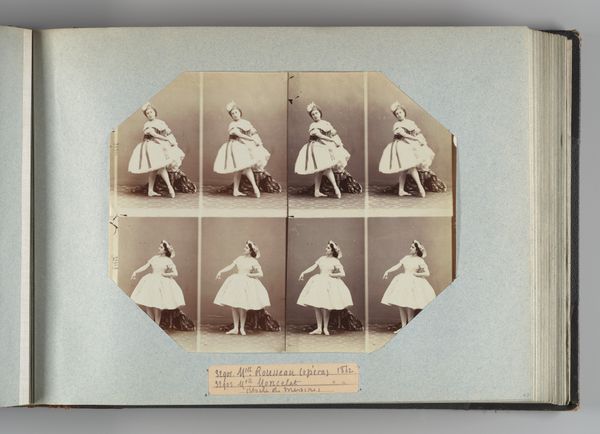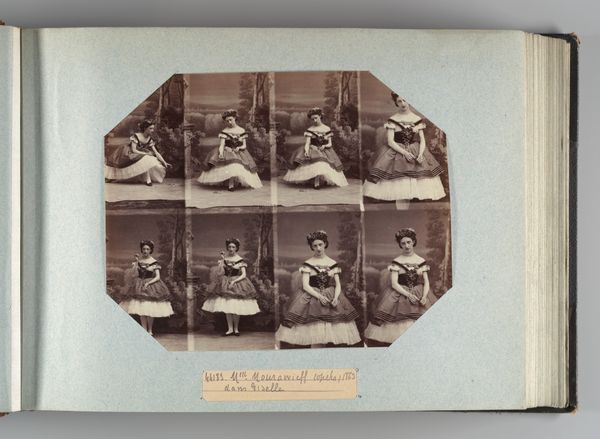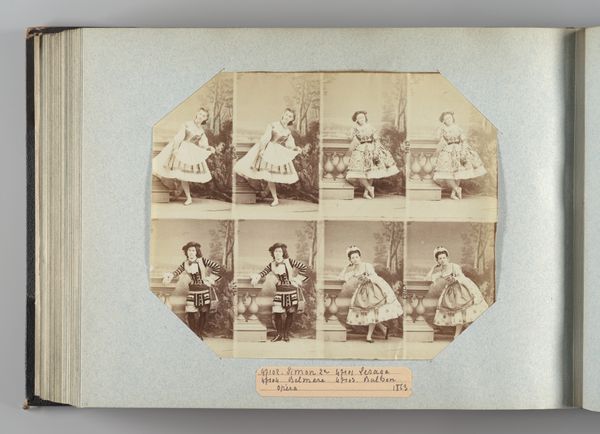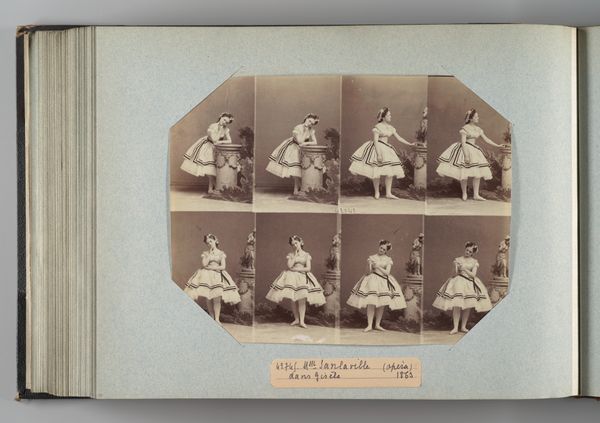
photography
#
portrait
#
16_19th-century
#
photography
Dimensions: Image: 7 3/8 × 9 1/4 in. (18.8 × 23.5 cm) Album page: 10 3/8 × 13 3/4 in. (26.3 × 35 cm)
Copyright: Public Domain
Curator: Before us, we have André-Adolphe-Eugène Disdéri’s "Augustine Stoïkoff dans le Papillon" from 1860, held at the Metropolitan Museum of Art. Editor: My immediate impression is one of elaborate artifice. The composition, particularly with the repeated poses, feels meticulously staged, almost like a doll's performance. Curator: Indeed. The repeated poses you notice stem from Disdéri’s pioneering use of the carte-de-visite format, a photographic calling card, really. These eight distinct images arranged on one card demonstrate Disdéri's command over creating sequential movement through individual exposures. Each frame seems to carefully adjust Stoïkoff's posture, but what narrative is it constructing? Editor: It’s less narrative, perhaps, and more of an assertion of identity, mediated through very specific social codes. The staging, Stoïkoff's dress—presumably representing the “Papillon” or butterfly, signifies luxury and perhaps an aspiration toward elevated status, especially during a time of massive social restructuring in Europe. She performs a spectacle of bourgeois femininity. Curator: Agreed. Formally, the almost sepia monotone creates an atmosphere, but it's the contrast between the sharp detail of Stoïkoff's features and the slight blur in some of the movement sequences that truly engages my attention. It underlines the paradox of capturing movement within a static medium, it shows a passage of time. The geometric arrangement of the shots in a grid amplifies the sense of calculated precision. Editor: What strikes me are the subtle shifts. Look how much is being shown in order to comply with strict codes while seemingly transgressing it—revealing and concealing at once. There is something to say about how such small, seemingly inconsequential objects functioned within and upheld broader political and economic power structures of the time. These photographs could reach thousands and create "types". Curator: Fascinating—your focus reveals nuances I missed at first glance. By framing it within social power structures, the butterfly imagery transforms. Editor: Exactly! Thinking about this work, it is like glimpsing a fleeting historical moment, revealing social conditions through this aesthetic strategy, that still speaks to how we perform for and mediate the world around us.
Comments
No comments
Be the first to comment and join the conversation on the ultimate creative platform.
